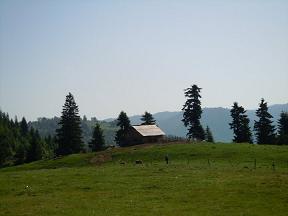
“We soon reached his cave, but he was out shepherding, so we went inside and took stock of all that we could see. His cheese-racks were loaded with cheeses, and he had more lambs and kids than his pens could hold…When he had so done he sat down and milked his ewes and goats, all in due course, and then let each of them have her own young. He curdled half the milk and set it aside…”
Thus is the excerpt from Homer’s Odyssey (in a translation from the Ancient Greek by Samuel Butler, the Victorian novelist) which describes the much feared Cyclops making cheese from sheep’s milk in 8th Century B.C. Cheese, in all its forms and flavors, is a product that has for thousands of years, sustained life in the countryside, graced the tables of the rich, and made for a most delectable, diverse, and nutritious meal for billions of people worldwide since the first recordings in mythology which credit Aristaeus with the discovery of this delicious and highly resourceful milk by-product.
The Latin root of the word cheese is caseus, the same which denotes the protein found in cheese commonly called casein in today’s English vocabulary. The makings of cheese are complex and age-old, and the people who are skilled in producing many types of cheeses worldwide in their traditional manner are today both special and rare. Last Sunday, after quite a long hike up the mountain in my local village, I met one of those rarities.
Lasting Impressions
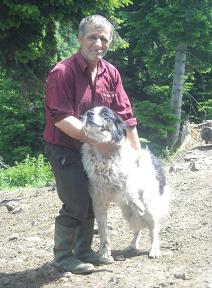
The shepherd (called a păstor in the Romanian language) that I met, along with his apprentices, has had generations of experience handed down to him and due to the help of a close friend and neighbor in Romania, I was able to interview and spend time with his family as the entire process and all its parts were revealed to us. Because his workplace, the stâna, was on the top of the mountain, it took us nearly three hours to reach him. The very large and “friendly looking-but dangerous to strangers” sheepdogs were out and protecting their flock, therefore, we took great care to contact him several times by cell phone as we neared his location to announce our arrival and keep the dogs at bay.
I had taken along another friend from the U.S. who was visiting for the weekend, and he and my Romanian friend (who by the way was a superior guide through the steep and unknown areas as we climbed) were finally at the summit, on this sunny, humid and decidedly warm June day. As a Peace Corps volunteer here in Brusturoasa, Romania, there are many opportunities to meet with the locals and because I am blessed with the best of friends, I was very grateful to have this very special opportunity to be guided to have a glimpse at what is necessary to produce the most wonderful cheese that I’ve ever tasted, the brânza în coajă de brad (cheese encased in fir tree bark).
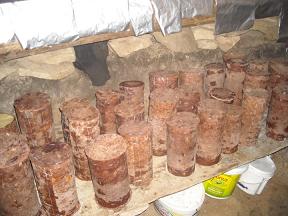
Right away, I knew I would be having an experience never to forget. I left the digital recorder and the pen and notepad that I had brought in my backpack as I had in that instant at the threshold decided to scrap the original plan and just go with the day about to unfold. Taking photos as we neared the tiny house, I could see a horse, a man, a dog, and several cows waiting patiently for the team of “explorers” who had traveled so far to reach them there. After a long and welcoming handshake, a kiss on both cheeks, and the biggest smile ever coming from a face that I’d never seen before, distinguished in its wear from the outside work, wind and beating sun, I just couldn’t think of conducting a formal interview as I was so overtaken by the hike, the expectation and the aura of the surroundings, including the animals, the man himself, and his family members and fellow shepherds who soon appeared to greet us all as well. As the meeting began, it quickly turned into a preciously wealthy visit. This learning experience was one that included a superb helping of food and drink, and then the start of a friendship with others who lived a life so far removed from one that I’ve known and that I had not so imagined would be possible.
Inside the Stână
The shepherd and his wife, and their granddaughter (who happened to be one of my students in this small village) and several friends of theirs who came to help with the work, took us in and we were led on a tour of the small, below ground room which housed this famously elusive cheese which I had bought and seen on only on a handful of occasions since coming to Romania one year ago this month.
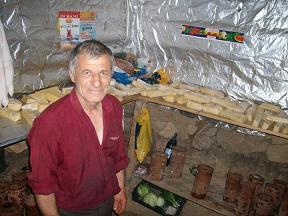
There were only two shelves that ran around the perimeter of the room, the finished product, what I consider to be one of my personal “diamonds” of foodstuffs, were stored on the bottom shelving and on the top lay huge rounds and cut up blocks of cheese. In the center of the room, a hand-cranked grinder and a large bin in which the first forms of the new cheese curdles would then be separated into smaller sized beads as it were and then later pressed into the approximately 10 to 15 inch cylinders of different circumferences made by hand from the boiled bark of fir trees, then tied together such as a slipper or shoe would be if it were from the middle ages.
In the two rooms adjacent, an open space for milking the sheep who stuck their heads in from time to time through two triangularly-shaped doorways. I observed one sheep nursing a new lamb and another who curiously would pop in and out expecting to find out what might be going on with these strange people now here. I didn’t realize that there would later be hundreds of them parading through the tiny room through the open way which looked in essence like an imaginary film screen showing the free movie of all of the tall trees, the green pastures, and all of the other animals outside in their natural setting…how truly pastoral in every sense of the word.
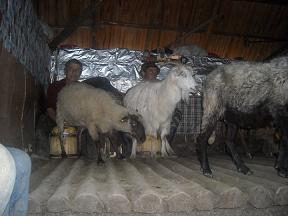
In the next and last room, there was a lit fire on the floor, two, tall butter churns, a cabinet attached to the wall, and several large vats/pots. There was a shelf in the corner with wooden poles for stirring food, a large colander, a funnel, a large pitcher, and a flat board press made just for one stage of the cheese making. The décor included only rugs on the wall and wool blankets laid out on the only two couch beds which sufficed as sleeping quarters within the multipurpose room. Above, there was a loft, probably for more sleepers, where hanging down I observed a few drying sheep stomachs used to make another cheese called brânză de burduf. As is customary in Romanian households here, there were several modest icons for the expression of the Orthodox faith.
The Hosts with the Most-est
The only table was quickly moved to the room in the center open to the outdoors by the lady of the house and her granddaughter for our feast. And what a feast! We had mămăligă, a traditional Romanian staple, (the cornmeal was prepared using a very long wooden stick to stir the mix in a hefty iron pot over the open fire in the center of the room with only water and some salt to perfect consistency) stuffed with a form of the fresh cheese and then shaped into large balls by hand for our individual enjoyment (although surely by then were satiated even without the addition of this wonderful accompaniment).
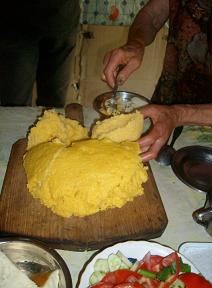
The mămăliga was after shaping lightly toasted on the fire to melt the cheese inside leaving a slight crust outside. Amazingly good! And then came the țuica (a very concentrated customary wine/liquor made from local plums), and multiple tastings of all the stages of the cheese, beginning with the raw milk that came from the morning’s work with all 400 sheep and a bevy of goats in different hues which speckled the herd. We tasted the fresh butter made there old-fashioned way, and they served us tomatoes, cucumbers and onions to garnish the meal. The insistence was to eat more and to drink more, and I did. Every time I’d put down my little glass, it was somehow back in my hand as I proclaimed, “mulțumim frumos/no, thanks very much,” each time the glass found its way back to me full. And, even though I’d never had raw milk, and rarely even drink anything but soy milk, I wondered at the taste and its consequence and so, to be a proper guest, I tried it from the stainless steel cup that appeared in front of me, and, of course, as I hoped to expect, loved it right then and there for all time. As a token of my appreciation for the invitation, I’d also brought something along for the visit. A fresh carrot cake with raisins that I’d made very early that morning to share with them, even though it was difficult to manage to carry all the way up the mountain as we trekked onward and upward. The complements after it made its way around the crowd were well worth the trouble. In Romanian, I was able to share the recipe with the Mrs. and we bonded, then and there.
A Shepherd’s Story
During the course of the day, we discussed life on the mountain. For this very friendly and highly knowledgeable shepherd in his sixties, his oneness with the animals and the love of the food and the nature which inevitably produces it, far outweighed his own and concerns and thoughts of the difficulty of what it took to live this kind of life so remote and removed from everything else down in the village from where we came. There was of course no plumbing, no running water, no electricity and there were no other resources except for a place on the mountainside to get water from a downhill stream. The responsibility of the animals: six pigs, eight cows, five dogs, one donkey, about 20 goats, 400 plus sheep, and one horse which I nicknamed “James Bond” for reasons heretofore to be only known to the group there in the stână exclusively, rested not without care and heavy burden each day upon this man, who always gets up at 4 am, working until 9 or ten in the evening, and from May 15th to the end of September, and each year he lives in relative isolation along with his small family and “band of brother” shepherds (there were three who I met that day) although he projected a carefree soul and a demeanor that was equally serious about his work and open to the humor that comes from many years of living an honest life.
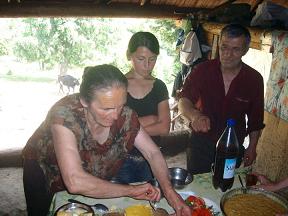
His joyful and especially loving way with all of the animals there I’d never seen here yet in the countryside as it is unusual for the people who own the animals to be close with their charges. But he embraced their presence and cared for them as if they were his children. I gained more respect minute by minute as during the day, I saw through his spirit and interactions with us, that he had developed many long-term and lasting friendships, certainly working hard all his life to maintain the livelihood of his ancestors, and as a consequence, he’d learned much from generations of experiences, reared a family, and still had time to accept and be interested in some heretofore strange persons who wanted to know how and why in one elusive place the secrets of the pleasure of the senses (as far as Romanian cuisine for me were concerned) were tucked away, hidden among the uppermost portions of God’s green earth.
Hidden until now, that is. He told me of his family life and how despite the years, he always looked forward to each day with them and the mission that he had to make the products for the many other people who own the sheep. You see, he is the caretaker who is the “man of the hour”, he and his fellows who makes the coajă de brad for other men and families in town who own the sheep. They purchase the sheep, he cares for them along with the men up on the mountain with whom he works, nurtures them and creates his masterpiece, then the individual owners are able to net the final product which he makes. He is initially paid for his time and effort as the overseer of all the operation. Each owner will net approximately ten cylinders worth of cheese for the season. Our shepherd says he has some of the sheep that are his own for products for his family. He was taught to do this as a boy of twelve and for the past 50 years, he has continued in this work with a strong heart and a mind for what it means to everyone around him.
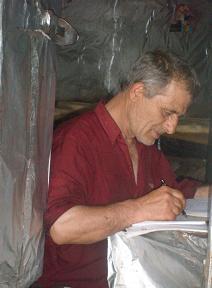
After dinner and before the milking of the sheep again in the late afternoon (this would be their second milking as they are milked three times daily) he took out his journal and recorded the day’s work for the books. I snapped a picture of the only time he looked really quite serious while we were there. It essentially explained how much he relies on these methods and their history from hundreds of years ago, to preserve his life for both himself and his family in the present and hopefully well into the future. Without any other work and not desiring any other work, I wondered how long the shepherds like him will be able to sustain their traditions in this country. It was a question I begged to ask, but left for another day.
“Part Two of a Pastoral Day” will be published on June 28, 2010.

Experienta pe care o impartasesti are o valoare deosebita. Te invidiez pentru sansa pe care ai avut-o, de a petrece o zi sus la munte, la stână, in sânul naturii, al puritătii, departe de civilizatie si de tot ce este “atins” de mana omului.
Familia despre care povestesti, traieste in conditii atat de simple si totusi sunt fericiti. E o lectie de viata pentru noi toti, ne vorbeste despre simplitate, bunatate, vrednicie, statornicie.Ce calitati minunate si atat de rar intalnite in zilele noastre!
Iar brânza în coajă de brad, mamaliga “buzunar” (cum o numesti tu), brânza de burduf, sunt toate niste delicii!
Astept cu nerabdare partea a doua!
Multumim frumos, Cristina!